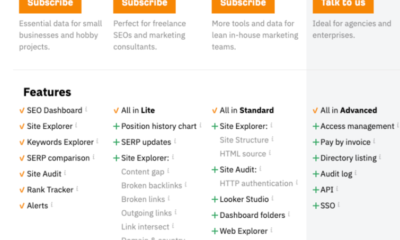Politics
10 Practical Ways to Maximize Your After-Work Time
Published
2 years agoon
By
Drew Simpson
After work, you probably want a relaxing, stress-free night. And that makes sense. Planning activities like reading or meditating can help relieve stress when things get tough at work.
In addition, you can use this time to expand your knowledge or develop your skills. Additionally, you can engage in new experiences or pursue a passion.
The benefits of participating in these activities can range from increasing your productivity to improving your health and general well-being.
With that said, here are 10 practical ways to maximize your after-work time.
1. Tie up loose ends.
My mom had a tradition that she followed every evening when I was a child. As soon as we got home from school, we had to clean up the house. It wasn’t a long bit of cleaning — usually, she set a timer for 20-minutes. Obviously, we whined about this and the time trying to get out of it was likely longer than the actual time spent. But this effort and habit kept the house tidy and saved us from major cleanings if the cleaning had waited until the weekend.
After I finish working for the day, I will set a timer for 20-30 minutes and tidy up. Or, I can handle items on my to-do list I couldn’t do during the day. Even though that’s not a lot of time, you’d be surprised at what you can actually accomplish.
You can clean dishes, fold laundry, make a grocery list, clean your calendar, or send an important email. In addition, a timer can be a great way to tie up the day’s loose ends and help your transition from work.
2. Get a weeknight hobby.
Commit to an out-of-the-home activity after work. Some ideas could be an exercise class, volunteering, or a night out with friends. Then, rather than spending your time at home, you’ll have more time to do what you care about.
“By scheduling your time after work, you are more likely to stick to your most important ‘to-do’ items. Many people find that they are most productive when they have more to do,” says Dr. Lisa N. Folden, licensed physical therapist and naturopathic lifestyle coach, owner of Healthy Phit Physical Therapy & Wellness Consultants. “By having a scheduled event after work—especially one that can double as exercise—you have more accountability to avoid sitting around aimlessly scrolling through your phone or watching TV.”
3. Sweat it out.
Yes, I am aware. You’re well aware of the importance of physical activity. However, this still can’t be stressed enough. There is no doubt that a regular exercise program boosts your creativity, confidence, and resilience — whether in the workplace or the home.
In short, moving your body is one of the best things you can do to boost your productivity. After all, exercising relieves stress and relieves mental strain. The result? You’ll sleep better and be more energetic.
So, block out time at the end of the day — to go for a run, ride a bike, or join an exercise class. Other ideas would be playing with your pet or kids, dancing, or getting caught up on a chore.
4. Enjoy the company of those you love.
Spend quality time with those who are important to you, such as family, friends, and colleagues. Not only does it make life worthwhile, but it’s good for you too. It releases endorphins and lowers stress when you talk to your spouse, kids, siblings, parents, or friends. Even a simple phone call with a loved one can benefit your well-being.
What’s more, with friends and family, there are lots of fun things to do, such as;
- Go to a restaurant or host dinner at home.
- Visit a museum or art gallery.
- Go for a walk after dinner.
- Host a game night.
- Attend a concert or sporting event.
- Go to the movies.
- Participate in a group activity, like bowling.
- Attend classes together.
5. Address your needs.
“This may seem totally out of place in an article about getting a lot done after work, but hear me out,” writes Rachell Buell over The Muse. “While it’s very important to make the most of your time, the only way you will have enough energy to do so is by first attending to your basic needs.” Also, get plenty of sleep, eat, and relax. “By addressing these needs, you allow yourself the quintessential element to productivity: sustainability.”
“A few weeks ago, I had a serious moment of panic,” Buell shares. “Feeling completely overwhelmed by everything on my plate, I lost my cool.” Regaining my composure, I came up with a brilliant idea: a sanity list,” she added.
“The list included things like doing daily yoga and drinking 64 ounces of water every day of water and cuddling with my husband. Whenever I cross everything off my list, I feel like a million bucks, and I’m fired up for more.”
“After a long day of work, most of us need time to switch gears and give ourselves a mental break before we try to accomplish anything else,” Buell says. “Whether that’s plopping in front of the TV to catch up on the day’s news or going for a jog to take the edge off, take a moment and consider what you need to feel recharged during the week, and keep it on your sanity list.”
6. Write out your priorities.
Is there ever a time when you feel like something is a high priority when it’s not? When prioritizing productivity, it can be easy to focus on getting more done rather than considering what is really important.
At the beginning of each week, I find it helpful to prioritize everything on my to-do list. Then, during the week, I navigate my time more efficiently by determining how essential a given item is. Personally, I use the Eisenhower Matrix to assist me with this.
By figuring out where each item fits in, you can focus on where to begin. For example, when doing home projects, start with the most essential stuff — then move to the middle and lower priority stuff. With work projects, you can start the next day knowing what needs to happen in what order.
Best of all? Creating a list of priorities can help you feel accomplished even if you don’t start the project yet.
7. Get outside.
Are you familiar with “nature deficit disorder”? Initially, Richard Louv used the phrase in his book Last Child in the Woods: Saving Our Children From Nature-Deficit Disorder. Louv says our indoor lifestyles are causing a lot of health and behavioral issues.
Even if you think that’s a stretch, studies have found that we spend 92% of time indoors. And that can negatively influence our physical and mental health. Why? Because it’s a simple way to reduce stress, increase happiness, and live healthier.
Moreover, connecting with nature and the outdoors can replenish your energy.
With that in mind, Rachel Hopman, Ph.D., a neuroscientist at Northeastern University, suggests that you live by the 20-5-3 rule;
- 20-minutes. Twenty minutes is how much time you should spend outside, like at a neighborhood park, three times a week.
- 5-hours. Five hours is the minimum amount of time you should spend each month in semi-wild nature, like a forest, city, or state park.
- 3-days. You should go camping or rent a cabin three times a year to escape it all.
8. Power down.
In today’s culture, many of us are overly attached to social media and our smartphones. In fact, DataReportal estimates the average American looks at a screen for 7 hours and 4 minutes a day. So why’s that a problem? Research has found too much screen time cal lead to digital eye strain, impaired sleep, and diminished mental health.
Furthermore, too much screen time can result in information overload. And it’s also distracting when we’re trying to get things done.
Therefore, setting boundaries around your phone and social media use is vital. For example, set a timer to limit how long you play games, watch videos, or scroll on social media. If that doesn’t work, keep your phone in a different room or make sure you shut down all social media at a specific time each night.
Initially, this will be awkward. But you may be surprised how much more alive you feel when you’re away from screens. Eventually, you’ll feel re-energized rather than worn out after work.
9. Invest in yourself.
Did you know that the former CEO of Twitter, Dick Costolo, studied improv comedy? Why? Learning improv comedy improved his leadership skills.
Investing in yourself is vital to success, whether that means getting some coaching, participating in psychotherapy, taking a workshop, working on more hours for graduate school, or completing a certification program. You could also learn how to play a musical instrument, join a book club, watch a documentary, or take a language course.
Overall, you’ll succeed in your professional career whether you invest in your mind, body, or spirit.
10. Follow an evening routine.
“It’s clear that you need a specific morning routine to optimize each day and be more efficient,” writes Choncé Maddox in a previous Calendar post. However, “a successful morning routine actually starts the night before,” she adds. “Simply put, you need an effective evening routine to maximize efficiency and productivity the following day.”
So, what should your evening routine consist of? Well, that’s up to you. But, here are some suggestions worth exploring;
- Plan out your day. Look at your calendar to find out what’s on your agenda for tomorrow. Doing so gets you mentally prepared and makes any adjustments.
- Pick out your clothes. The task may sound insignificant. But it will save you a lot of time and energy that you could use elsewhere.
- Eliminate negativity and reflect. You can reflect on your day in the evening and choose gratitude over negativity.
- Read. Turn off the television and read a book while you wind down for the evening.
- Prepare meals. Mornings are already hectic. Save your sanity and energy by preparing your meals the night before.
Published First on Calendar. Read Here.
Image Credit: Karolina Grabowska; Pexels; Thank you!
Calendar
We are Calendar, trying to make the world a much more productive place. Check us out online at https://www.calendar.com.
You may like
-


How carbon removal technology is like a time machine
-


Climate tech is back—and this time, it can’t afford to fail
-


Four ways AI is making the power grid faster and more resilient
-


Plastic is a climate change problem. There are ways to fix it.
-


15 Proven Ways to Increase Customer Engagement and Build Loyalty
-


Four Clever Ways to Use Tiered Pricing for Maximum Profit
Politics
Fintech Kennek raises $12.5M seed round to digitize lending
Published
7 months agoon
10/11/2023By
Drew Simpson
London-based fintech startup Kennek has raised $12.5 million in seed funding to expand its lending operating system.
According to an Oct. 10 tech.eu report, the round was led by HV Capital and included participation from Dutch Founders Fund, AlbionVC, FFVC, Plug & Play Ventures, and Syndicate One. Kennek offers software-as-a-service tools to help non-bank lenders streamline their operations using open banking, open finance, and payments.
The platform aims to automate time-consuming manual tasks and consolidate fragmented data to simplify lending. Xavier De Pauw, founder of Kennek said:
“Until kennek, lenders had to devote countless hours to menial operational tasks and deal with jumbled and hard-coded data – which makes every other part of lending a headache. As former lenders ourselves, we lived and breathed these frustrations, and built kennek to make them a thing of the past.”
The company said the latest funding round was oversubscribed and closed quickly despite the challenging fundraising environment. The new capital will be used to expand Kennek’s engineering team and strengthen its market position in the UK while exploring expansion into other European markets. Barbod Namini, Partner at lead investor HV Capital, commented on the investment:
“Kennek has developed an ambitious and genuinely unique proposition which we think can be the foundation of the entire alternative lending space. […] It is a complicated market and a solution that brings together all information and stakeholders onto a single platform is highly compelling for both lenders & the ecosystem as a whole.”
The fintech lending space has grown rapidly in recent years, but many lenders still rely on legacy systems and manual processes that limit efficiency and scalability. Kennek aims to leverage open banking and data integration to provide lenders with a more streamlined, automated lending experience.
The seed funding will allow the London-based startup to continue developing its platform and expanding its team to meet demand from non-bank lenders looking to digitize operations. Kennek’s focus on the UK and Europe also comes amid rising adoption of open banking and open finance in the regions.
Featured Image Credit: Photo from Kennek.io; Thank you!
Radek Zielinski
Radek Zielinski is an experienced technology and financial journalist with a passion for cybersecurity and futurology.
Politics
Fortune 500’s race for generative AI breakthroughs
Published
7 months agoon
10/11/2023By
Drew Simpson
As excitement around generative AI grows, Fortune 500 companies, including Goldman Sachs, are carefully examining the possible applications of this technology. A recent survey of U.S. executives indicated that 60% believe generative AI will substantially impact their businesses in the long term. However, they anticipate a one to two-year timeframe before implementing their initial solutions. This optimism stems from the potential of generative AI to revolutionize various aspects of businesses, from enhancing customer experiences to optimizing internal processes. In the short term, companies will likely focus on pilot projects and experimentation, gradually integrating generative AI into their operations as they witness its positive influence on efficiency and profitability.
Goldman Sachs’ Cautious Approach to Implementing Generative AI
In a recent interview, Goldman Sachs CIO Marco Argenti revealed that the firm has not yet implemented any generative AI use cases. Instead, the company focuses on experimentation and setting high standards before adopting the technology. Argenti recognized the desire for outcomes in areas like developer and operational efficiency but emphasized ensuring precision before putting experimental AI use cases into production.
According to Argenti, striking the right balance between driving innovation and maintaining accuracy is crucial for successfully integrating generative AI within the firm. Goldman Sachs intends to continue exploring this emerging technology’s potential benefits and applications while diligently assessing risks to ensure it meets the company’s stringent quality standards.
One possible application for Goldman Sachs is in software development, where the company has observed a 20-40% productivity increase during its trials. The goal is for 1,000 developers to utilize generative AI tools by year’s end. However, Argenti emphasized that a well-defined expectation of return on investment is necessary before fully integrating generative AI into production.
To achieve this, the company plans to implement a systematic and strategic approach to adopting generative AI, ensuring that it complements and enhances the skills of its developers. Additionally, Goldman Sachs intends to evaluate the long-term impact of generative AI on their software development processes and the overall quality of the applications being developed.
Goldman Sachs’ approach to AI implementation goes beyond merely executing models. The firm has created a platform encompassing technical, legal, and compliance assessments to filter out improper content and keep track of all interactions. This comprehensive system ensures seamless integration of artificial intelligence in operations while adhering to regulatory standards and maintaining client confidentiality. Moreover, the platform continuously improves and adapts its algorithms, allowing Goldman Sachs to stay at the forefront of technology and offer its clients the most efficient and secure services.
Featured Image Credit: Photo by Google DeepMind; Pexels; Thank you!
Deanna Ritchie
Managing Editor at ReadWrite
Deanna is the Managing Editor at ReadWrite. Previously she worked as the Editor in Chief for Startup Grind and has over 20+ years of experience in content management and content development.
Politics
UK seizes web3 opportunity simplifying crypto regulations
Published
7 months agoon
10/10/2023By
Drew Simpson
As Web3 companies increasingly consider leaving the United States due to regulatory ambiguity, the United Kingdom must simplify its cryptocurrency regulations to attract these businesses. The conservative think tank Policy Exchange recently released a report detailing ten suggestions for improving Web3 regulation in the country. Among the recommendations are reducing liability for token holders in decentralized autonomous organizations (DAOs) and encouraging the Financial Conduct Authority (FCA) to adopt alternative Know Your Customer (KYC) methodologies, such as digital identities and blockchain analytics tools. These suggestions aim to position the UK as a hub for Web3 innovation and attract blockchain-based businesses looking for a more conducive regulatory environment.
Streamlining Cryptocurrency Regulations for Innovation
To make it easier for emerging Web3 companies to navigate existing legal frameworks and contribute to the UK’s digital economy growth, the government must streamline cryptocurrency regulations and adopt forward-looking approaches. By making the regulatory landscape clear and straightforward, the UK can create an environment that fosters innovation, growth, and competitiveness in the global fintech industry.
The Policy Exchange report also recommends not weakening self-hosted wallets or treating proof-of-stake (PoS) services as financial services. This approach aims to protect the fundamental principles of decentralization and user autonomy while strongly emphasizing security and regulatory compliance. By doing so, the UK can nurture an environment that encourages innovation and the continued growth of blockchain technology.
Despite recent strict measures by UK authorities, such as His Majesty’s Treasury and the FCA, toward the digital assets sector, the proposed changes in the Policy Exchange report strive to make the UK a more attractive location for Web3 enterprises. By adopting these suggestions, the UK can demonstrate its commitment to fostering innovation in the rapidly evolving blockchain and cryptocurrency industries while ensuring a robust and transparent regulatory environment.
The ongoing uncertainty surrounding cryptocurrency regulations in various countries has prompted Web3 companies to explore alternative jurisdictions with more precise legal frameworks. As the United States grapples with regulatory ambiguity, the United Kingdom can position itself as a hub for Web3 innovation by simplifying and streamlining its cryptocurrency regulations.
Featured Image Credit: Photo by Jonathan Borba; Pexels; Thank you!
Deanna Ritchie
Managing Editor at ReadWrite
Deanna is the Managing Editor at ReadWrite. Previously she worked as the Editor in Chief for Startup Grind and has over 20+ years of experience in content management and content development.
